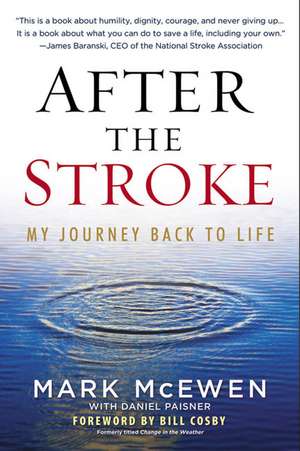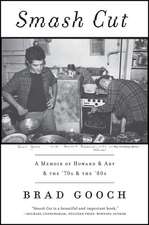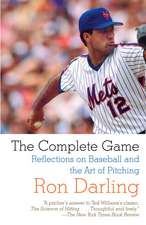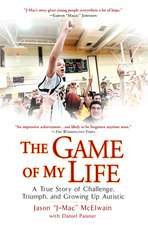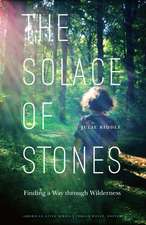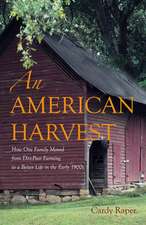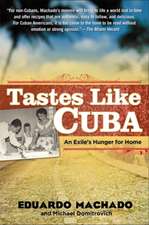After the Stroke: My Journey Back to Life
Autor Mark McEwen Daniel Paisneren Limba Engleză Paperback – 30 apr 2009 – vârsta de la 18 ani
The intimate, life-affirming journey of recovery and rehabilitation from a major stroke, written by one of morning television's most beloved personalities
Mark McEwen was at the top of his game and enjoying life when he suffered a stroke. After fifteen years on The Early Show, he had moved to Orlando to anchor the local news and spend more time with his family. While traveling, he experienced symptoms that led him to a hospital, where he was misdiagnosed with the flu. Two days later, on an airplane flight just hours before he finally collapsed, flight attendants and airport staff dismissed his slurred speech and heavy sweating. Misinformation not only delayed his treatment, but it also nearly cost him his life.
Now, in a candid and moving memoir, America's beloved morning-show weatherman recalls his harrowing journey of rehabilitation from a massive stroke. After the Stroke traces his recovery in the aftermath of temporarily losing some of his greatest gifts- his talent as a public speaker, and his warm, witty exuberance-while his wife worked valiantly to care for their children as well as her seriously ill husband. Sharing an ultimately triumphant story, McEwen emerges as one of our most dynamic new crusaders for stroke victims and their families.
Mark McEwen was at the top of his game and enjoying life when he suffered a stroke. After fifteen years on The Early Show, he had moved to Orlando to anchor the local news and spend more time with his family. While traveling, he experienced symptoms that led him to a hospital, where he was misdiagnosed with the flu. Two days later, on an airplane flight just hours before he finally collapsed, flight attendants and airport staff dismissed his slurred speech and heavy sweating. Misinformation not only delayed his treatment, but it also nearly cost him his life.
Now, in a candid and moving memoir, America's beloved morning-show weatherman recalls his harrowing journey of rehabilitation from a massive stroke. After the Stroke traces his recovery in the aftermath of temporarily losing some of his greatest gifts- his talent as a public speaker, and his warm, witty exuberance-while his wife worked valiantly to care for their children as well as her seriously ill husband. Sharing an ultimately triumphant story, McEwen emerges as one of our most dynamic new crusaders for stroke victims and their families.
Preț: 131.34 lei
Nou
Puncte Express: 197
Preț estimativ în valută:
25.13€ • 27.29$ • 21.11£
25.13€ • 27.29$ • 21.11£
Carte disponibilă
Livrare economică 01-15 aprilie
Preluare comenzi: 021 569.72.76
Specificații
ISBN-13: 9781592404605
ISBN-10: 159240460X
Pagini: 235
Dimensiuni: 135 x 204 x 20 mm
Greutate: 0.22 kg
Editura: GOTHAM BOOKS
ISBN-10: 159240460X
Pagini: 235
Dimensiuni: 135 x 204 x 20 mm
Greutate: 0.22 kg
Editura: GOTHAM BOOKS
Recenzii
"A heartwarming tale of triumph against overwhelming odds. For anyone who has suffered a stroke or knows someone who has, Mark's words will make them laugh and cry, but mostly will give them hope."
-George H.W. Bush, 41st President of the United States
"Mark McEwen is one of America's great communicators. Read this book and you'll learn about the adventures of morning television, but you'll also find out how love and hard work brought a man who almost died back to life."
-Harry Smith, anchor of The Early Show on CBS
"A book about what you can do to save a life, including your own. [McEwen] is a true champion, committed to restoring dignity to stroke survivors."
-James Baranski, CEO of the National Stroke Association
-George H.W. Bush, 41st President of the United States
"Mark McEwen is one of America's great communicators. Read this book and you'll learn about the adventures of morning television, but you'll also find out how love and hard work brought a man who almost died back to life."
-Harry Smith, anchor of The Early Show on CBS
"A book about what you can do to save a life, including your own. [McEwen] is a true champion, committed to restoring dignity to stroke survivors."
-James Baranski, CEO of the National Stroke Association
Notă biografică
Mark McEwen was a fixture on CBS’s The Early Show from 1987 ߝ 2002 and also worked as a correspondent on the primetime news magazine 48 Hours. At the time of his stroke, he was an anchor at WKMG-TV in Orlando. He lives in Central Florida.
Extras
1
INTRODUCTION
It Ain’t No Use to Sit and Wonder Why, Babe
This is a book about stroke. Specifically, it’s about a massive stroke I suffered on Tuesday, November 15, 2005, on a plane home to Orlando, Florida, from Baltimore/ Washington International. This massive stroke followed a smaller stroke two days earlier that left me feeling weak and nauseated. Those symptoms drove me to an emergency room visit at a Baltimore-area hospital, where a doctor misdiagnosed me with the stomach fl u, sent me home, and told me to get some rest and drink plenty of fluids.
It’s also a book about me. People say you should write what you know. I know me, and I know stroke. This strikes me as funny, because up until a couple years ago I didn’t know the first thing about stroke. I didn’t know the second thing either. To be sure, I knew about me—but you could have barely filled a thimble with what I knew about stroke. Now I travel the country giving speeches to stroke survivors and their caregivers and families. I talk about warning signs and treatment options and aftercare considerations. Mostly I talk about how I survived my own stroke with the support and encouragement of my family and friends and therapists, but before I get to that happy ending I talk about how I naively followed that emergency room doctor’s advice and did as I was told. I talk about some of the horror stories I’ve collected along the way, and how misdiagnosis and misinformation seem to play a role in a lot of stroke cases. It’s like the opposite of that old maxim, “What you don’t know can’t hurt you.” With stroke, it’s more like, “What you don’t know can hurt you.” Heck, it can kill you. It nearly killed me.
A lot of the folks I talk to recognize me from television. They see someone they invited into their homes over breakfast, or into their bedrooms as they got dressed for work. They remember the long career I enjoyed at CBS News, first as a morning show weatherman and later as an entertainment reporter and eventually as a coanchor. Some of them remember how I spun a pie-in-the-sky, seat-of-the-pants turn as a stand-up comedian into a viable run as a rock ’n’ roll radio disc jockey and then into a long-running gig as a network news personality. Of course, they want to hear about my experience with stroke, that’s the baseline for our visit, but they want to hear about it from a familiar face. While we’re at it, they also want to hear about the unlikely career I managed to build at CBS; the front-row seat it provided to world events like the Olympic Games, political conventions, and Super Bowls; and the lasting friendships it helped me to forge with people like country music superstar Garth Brooks, singing legend Tony Bennett, my boyhood idol, Hall of Fame pitcher Bob Gibson, and President George H. W. Bush. Ironically, it was President Bush who signed the bill designating the month of May as National Stroke Awareness Month, back in 1989, more than fifteen years before I could recognize its importance.
It’s all tied together, the life I lived before my stroke and the life I’m living now, and I believe this is an important point. It reminds people that the lives they lived before stroke will come back to them in time, and it reinforces that stroke doesn’t discriminate. It doesn’t care about race or class or religion. It doesn’t care if you’ve had a long career in morning television or an anonymous career behind the scenes. It cares only about risk factors like high blood pressure and cholesterol and obesity, and whether or not you smoke or drink or exercise regularly.
I’ll write more about these risk factors a bit later on in these pages. For now, let me get back to me for a moment, to help set my rehabilitation and recovery in a kind of context. What a lot of people don’t remember is that when I worked at CBS I made most of my living in harm’s way. For fifteen years, I was the guy the producers asked to do the stunts. Before me, network morning shows featured weathermen, like my good friend Willard Scott, who were known for dressing in silly or outrageous outfits, or for saying silly or outrageous things. After me they had to go out and do stuff. And not just any stuff. It had to be exciting, perilous stuff. At first it just had to be silly or outrageous—to match the outfits and the outbursts, I guess—but then it had to be stuff any rational person wouldn’t even consider doing.
By the end of my long tenure at CBS, I was probably the only on-air network news personality with a “reckless endangerment” clause in his contract that actually required him to risk his life. This is a joke, of course, but it’s rooted in truth. I should know, because I was the guy they sent parasailing in ripping winds. (I almost drowned when they finally brought me down.) I was the guy they put in the air show plane, or in the race car, or at the top of the Leaning Tower of Pisa for no apparent reason other than it looked a little thrilling and seemed like a good idea. I was the guy who emerged from a coffin to the music of The Phantom of the Opera to open our Halloween show one year. I was the guy they put in a barrel in the middle of a bullring in Jackson, Mississippi, while a rodeo clown baited a not-toohappy bull into charging me. (It might as well have been another coffin.) I was the guy who rode the runaway dogsled in Lillehammer, Norway, that careened out of control. I was Walter Mitty, with protective gear.
Yep, that was me.
I was the guy who stood in as the honorary Longhorns quarterback and took a couple snaps from center for the University of Texas football team. Ricky Williams was a freshman, and on the first play I handed the ball off to him. That was easy enough. On the second play, I hit the wide receiver about fifteen yards downfield with a perfect spiral. Also easy enough.
On the third play, a defensive end named Chris Atkins broke through the line and hit me so hard I thought I saw birds and stars, like in the cartoons. Harry Smith and Paula Zahn were our anchors at the time. They were in an auditorium on campus, where we had set up a remote studio as part of our tour of the state of Texas. They were watching me on the monitors, along with a studio audience comprising mostly Longhorn fans. They all saw me get hit. I was miked, so they all heard me say, “Oooof!” very loud. This, apparently, is what you say, very loud, when you get hit by a three-hundred-pound defensive lineman. “Oooof!” It’s not really a word. It’s not even an exclamation. It’s just the sound you make when all the air leaves your lungs in a painful instant.
This got me on Entertainment Tonight, only not in a good way. It ran as a kind of blooper. They showed the footage of Chris Atkins tackling me. They played the audio of all that air leaving my lungs. Then they showed all the other players jumping on top of me, which I guess was meant to show what a rollicking good time they were all having at my expense. After that, they showed my colleagues in the studio, laughing it up. And finally they showed me, crawling my way out from under the pile and staggering to the camera. I took off my helmet and said, “I have a daughter!”
Man, I couldn’t believe that quarterbacks get hit that hard a dozen times a game, and still get up and get back out there. I was sore for a week. I tried to laugh it off, but it hurt. I left the field telling Chris I would sue him after he went pro, when he had some real money.
Yep, that was me.
I was up for almost anything, an aspect of headstrong character that would serve me well as I recovered from stroke, although occasionally I took some convincing. Once, in 1992, at the XVI Winter Olympics in Albertville, France, my producer Kevin Coffey spent a week getting me to agree to be buried in six feet of snow so viewers at home could watch an avalanche dog try to sniff me out. Kevin and I had worked together for years. He’s one of my closest friends. He knew my thresholds for pain and indignity and danger, and I knew his penchant for ratings and “good television” and the kinds of remote stunts that got our viewers talking, so it was an intense negotiation. He wanted what he wanted, which was to get me to do something outrageous, while I wanted what I wanted, which was to return home from Albertville in one piece. Kevin tried to tell me that it would be a public service, for me to submit to his avalanche dog stunt, to get people to be more careful in the mountains, but I wasn’t buying it. I just thought he wanted to bury me in the snow for the cameras. On the first Monday we were in France, he came up to me and asked if I’d agree to it.
I said, “No way.”
On Tuesday, Kevin pitched the idea to me again. He said, “How would you like to be buried in the snow?” It was as if we never had that first conversation. He reminded me that these avalanche dogs made life-and-death rescues, and that highlighting these rescue efforts might be helpful to people in avalanche or whiteout situations.
I said, “No way.”
On Wednesday, he came at me again.
Once again I said, “No way.” Only this time Kevin must have heard something in my voice that made him think I was softening. I was tired of saying no, but I wasn’t softening. I had no interest in being buried in all that snow, in creating a life-or-death situation for myself that might not turn out to the good.
INTRODUCTION
It Ain’t No Use to Sit and Wonder Why, Babe
This is a book about stroke. Specifically, it’s about a massive stroke I suffered on Tuesday, November 15, 2005, on a plane home to Orlando, Florida, from Baltimore/ Washington International. This massive stroke followed a smaller stroke two days earlier that left me feeling weak and nauseated. Those symptoms drove me to an emergency room visit at a Baltimore-area hospital, where a doctor misdiagnosed me with the stomach fl u, sent me home, and told me to get some rest and drink plenty of fluids.
It’s also a book about me. People say you should write what you know. I know me, and I know stroke. This strikes me as funny, because up until a couple years ago I didn’t know the first thing about stroke. I didn’t know the second thing either. To be sure, I knew about me—but you could have barely filled a thimble with what I knew about stroke. Now I travel the country giving speeches to stroke survivors and their caregivers and families. I talk about warning signs and treatment options and aftercare considerations. Mostly I talk about how I survived my own stroke with the support and encouragement of my family and friends and therapists, but before I get to that happy ending I talk about how I naively followed that emergency room doctor’s advice and did as I was told. I talk about some of the horror stories I’ve collected along the way, and how misdiagnosis and misinformation seem to play a role in a lot of stroke cases. It’s like the opposite of that old maxim, “What you don’t know can’t hurt you.” With stroke, it’s more like, “What you don’t know can hurt you.” Heck, it can kill you. It nearly killed me.
A lot of the folks I talk to recognize me from television. They see someone they invited into their homes over breakfast, or into their bedrooms as they got dressed for work. They remember the long career I enjoyed at CBS News, first as a morning show weatherman and later as an entertainment reporter and eventually as a coanchor. Some of them remember how I spun a pie-in-the-sky, seat-of-the-pants turn as a stand-up comedian into a viable run as a rock ’n’ roll radio disc jockey and then into a long-running gig as a network news personality. Of course, they want to hear about my experience with stroke, that’s the baseline for our visit, but they want to hear about it from a familiar face. While we’re at it, they also want to hear about the unlikely career I managed to build at CBS; the front-row seat it provided to world events like the Olympic Games, political conventions, and Super Bowls; and the lasting friendships it helped me to forge with people like country music superstar Garth Brooks, singing legend Tony Bennett, my boyhood idol, Hall of Fame pitcher Bob Gibson, and President George H. W. Bush. Ironically, it was President Bush who signed the bill designating the month of May as National Stroke Awareness Month, back in 1989, more than fifteen years before I could recognize its importance.
It’s all tied together, the life I lived before my stroke and the life I’m living now, and I believe this is an important point. It reminds people that the lives they lived before stroke will come back to them in time, and it reinforces that stroke doesn’t discriminate. It doesn’t care about race or class or religion. It doesn’t care if you’ve had a long career in morning television or an anonymous career behind the scenes. It cares only about risk factors like high blood pressure and cholesterol and obesity, and whether or not you smoke or drink or exercise regularly.
I’ll write more about these risk factors a bit later on in these pages. For now, let me get back to me for a moment, to help set my rehabilitation and recovery in a kind of context. What a lot of people don’t remember is that when I worked at CBS I made most of my living in harm’s way. For fifteen years, I was the guy the producers asked to do the stunts. Before me, network morning shows featured weathermen, like my good friend Willard Scott, who were known for dressing in silly or outrageous outfits, or for saying silly or outrageous things. After me they had to go out and do stuff. And not just any stuff. It had to be exciting, perilous stuff. At first it just had to be silly or outrageous—to match the outfits and the outbursts, I guess—but then it had to be stuff any rational person wouldn’t even consider doing.
By the end of my long tenure at CBS, I was probably the only on-air network news personality with a “reckless endangerment” clause in his contract that actually required him to risk his life. This is a joke, of course, but it’s rooted in truth. I should know, because I was the guy they sent parasailing in ripping winds. (I almost drowned when they finally brought me down.) I was the guy they put in the air show plane, or in the race car, or at the top of the Leaning Tower of Pisa for no apparent reason other than it looked a little thrilling and seemed like a good idea. I was the guy who emerged from a coffin to the music of The Phantom of the Opera to open our Halloween show one year. I was the guy they put in a barrel in the middle of a bullring in Jackson, Mississippi, while a rodeo clown baited a not-toohappy bull into charging me. (It might as well have been another coffin.) I was the guy who rode the runaway dogsled in Lillehammer, Norway, that careened out of control. I was Walter Mitty, with protective gear.
Yep, that was me.
I was the guy who stood in as the honorary Longhorns quarterback and took a couple snaps from center for the University of Texas football team. Ricky Williams was a freshman, and on the first play I handed the ball off to him. That was easy enough. On the second play, I hit the wide receiver about fifteen yards downfield with a perfect spiral. Also easy enough.
On the third play, a defensive end named Chris Atkins broke through the line and hit me so hard I thought I saw birds and stars, like in the cartoons. Harry Smith and Paula Zahn were our anchors at the time. They were in an auditorium on campus, where we had set up a remote studio as part of our tour of the state of Texas. They were watching me on the monitors, along with a studio audience comprising mostly Longhorn fans. They all saw me get hit. I was miked, so they all heard me say, “Oooof!” very loud. This, apparently, is what you say, very loud, when you get hit by a three-hundred-pound defensive lineman. “Oooof!” It’s not really a word. It’s not even an exclamation. It’s just the sound you make when all the air leaves your lungs in a painful instant.
This got me on Entertainment Tonight, only not in a good way. It ran as a kind of blooper. They showed the footage of Chris Atkins tackling me. They played the audio of all that air leaving my lungs. Then they showed all the other players jumping on top of me, which I guess was meant to show what a rollicking good time they were all having at my expense. After that, they showed my colleagues in the studio, laughing it up. And finally they showed me, crawling my way out from under the pile and staggering to the camera. I took off my helmet and said, “I have a daughter!”
Man, I couldn’t believe that quarterbacks get hit that hard a dozen times a game, and still get up and get back out there. I was sore for a week. I tried to laugh it off, but it hurt. I left the field telling Chris I would sue him after he went pro, when he had some real money.
Yep, that was me.
I was up for almost anything, an aspect of headstrong character that would serve me well as I recovered from stroke, although occasionally I took some convincing. Once, in 1992, at the XVI Winter Olympics in Albertville, France, my producer Kevin Coffey spent a week getting me to agree to be buried in six feet of snow so viewers at home could watch an avalanche dog try to sniff me out. Kevin and I had worked together for years. He’s one of my closest friends. He knew my thresholds for pain and indignity and danger, and I knew his penchant for ratings and “good television” and the kinds of remote stunts that got our viewers talking, so it was an intense negotiation. He wanted what he wanted, which was to get me to do something outrageous, while I wanted what I wanted, which was to return home from Albertville in one piece. Kevin tried to tell me that it would be a public service, for me to submit to his avalanche dog stunt, to get people to be more careful in the mountains, but I wasn’t buying it. I just thought he wanted to bury me in the snow for the cameras. On the first Monday we were in France, he came up to me and asked if I’d agree to it.
I said, “No way.”
On Tuesday, Kevin pitched the idea to me again. He said, “How would you like to be buried in the snow?” It was as if we never had that first conversation. He reminded me that these avalanche dogs made life-and-death rescues, and that highlighting these rescue efforts might be helpful to people in avalanche or whiteout situations.
I said, “No way.”
On Wednesday, he came at me again.
Once again I said, “No way.” Only this time Kevin must have heard something in my voice that made him think I was softening. I was tired of saying no, but I wasn’t softening. I had no interest in being buried in all that snow, in creating a life-or-death situation for myself that might not turn out to the good.
